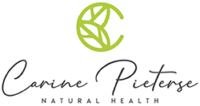The thyroid gland is very susceptible to damage from environmental toxins. This is because a lot of these toxins have a structural similarity to thyroid hormones, so therefore easily absorbed. There are thousands of chemicals in our environment and the safety of most of these chemicals haven’t been tested. On a daily basis, we can be continually exposed to a high volume of toxins in our homes, which we absorb through our skin and breathe in, affecting our thyroid and other functions. Look out for these toxins and see where you can gradually reduce and change to an alternative:
- Pesticides
- BPA – found in plastics such as water bottles, heating up food in plastic, glad wrap
- Triclosan – anti-bacterial in soaps
- Perchlorate thiocyanate – Perchlorate is in the production of leather, rubber, paint and batteries. It accumulates in our soil, groundwater, and food grown in contaminated soil. Drinking water, grains, produce, and dairy products from animals raised on contaminated soil may contain elevated levels of perchlorate fertiliser, smoking
- Polychlorinated biphenyls (PCB’s) – these toxins are used in lubricants, and in the production of plastics, adhesives, and paints
- Products high in VOC’s (volatile organic compounds) such as paint, carpets, curtains, flooring
- Mercury – Common sources of mercury exposure include dental amalgams, seafood, and pollution from coal-burning power plants. Mercury reduces iodide uptake, therefore, inhibits thyroid hormone production
- Lead – contamination to lead has increased substantially due to industrialization, mining, and the previous use of lead in petrol. Lead is also found in paint in older homes, inexpensive metal jewellery, and children’s toys.
- Perfluorinated compounds – these compounds can act as endocrine disruptors and is widely used in consumer goods including food packaging, paper wraps, firefighting foams, pesticides, textiles, industrial surfactants and emulsifiers, and Teflon
This reference article from the University of California San Francisco – Study Finds Wide Exposure to Environmental Toxics in Cohort of Pregnant Women, regarding the high absorption of environmental toxins by the foetus, indicates that our exposure to toxins starts at a very early age already.
This probably all looks like doom and gloom information because we can’t control all our exposure. Though here are some tips on things that you can control and reduce:
- Drink only filtered water
- Look at the Clean Fifteen, Dirty Dozen food lists showing which foods absorb less chemicals and are good to eat non-organic. The Dirty Dozen – best to eat these foods organic and the Clean Fifteen food list would be fine to eat non-organic
- Look at this list (see list below) to see which fish are high in mercury to avoid
- Ensure you have optimal selenium and iodine levels – make an appointment to do the necessary tests
- Stop use of chemical, synthetic soaps, creams, cosmetics and change to natural, organic products
- Stop using “non-stick” cookware and change to Neoflam cookware/stainless steel cookware/ceramic cookware made by Xtrema/Glass cookware
References:
- UCSF – Study Finds Wide Exposure to Environmental Toxics in Cohort of Pregnant Women
- NCBI – Effects of perfluorinated chemicals on thyroid function, markers of ovarian reserve, and natural fertility
- Dr Axe – 6 Dangers of Conventional Cookware + 4 Best Types of Nontoxic Cookware
- Kresser Institute – How Environmental Toxins Harm the Thyroid
High Mercury Fish To Avoid
- Southern Bluefin Tuna
- Spanish Mackerel
- Sailfish
- Rays
- Gemfish
- Orange Roughy
- Ling
- Grouper
- Marline
- Barracuda
- Shark (flake)
- Swordfish
- Wahoo
- AVOID: Farmed Barramundi
Low mercury fish
- Prawns
- Lobsters
- Oysters
- Salmon
- Canned tuna
- Sardines
- Calamari
- CONSUME: Wild Barramundi
Sources
- Food Standards Australia New Zealand (FSANZ)
- Fishers For Conservation Inc (FFC)






